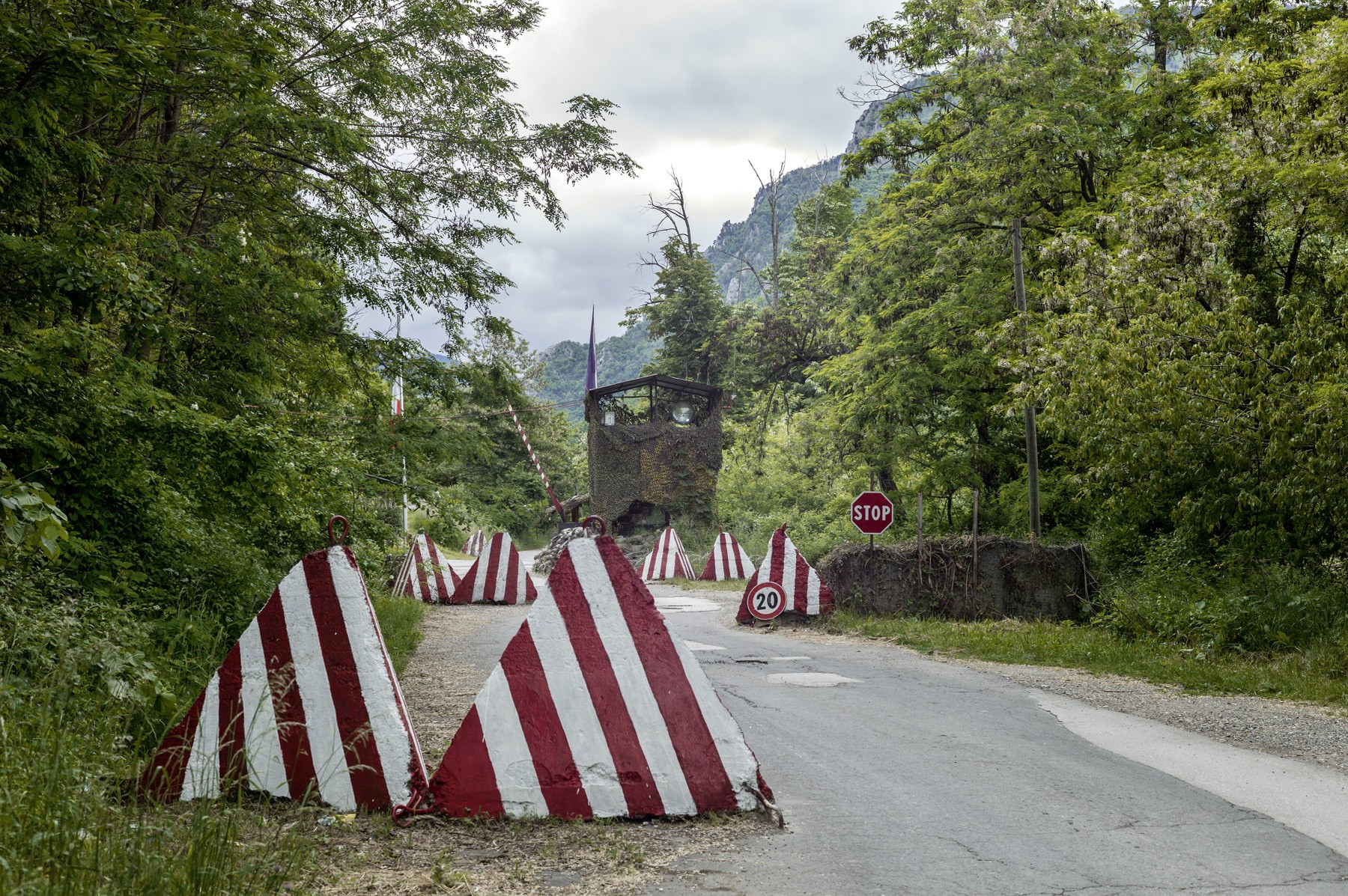Blood and Honey
In Blood and Honey: Encounters at the Borders of the Balkans, Dutch journalist Irene van der Linde and documentary photographer Nicole Segers set out to document the borders of the Balkans. The picture they show is rather grim.
In Blood and Honey: Encounters at the Borders of the Balkans, Dutch journalist Irene van der Linde and documentary photographer Nicole Segers set out to document the borders of the Balkans. The picture they show is rather grim.
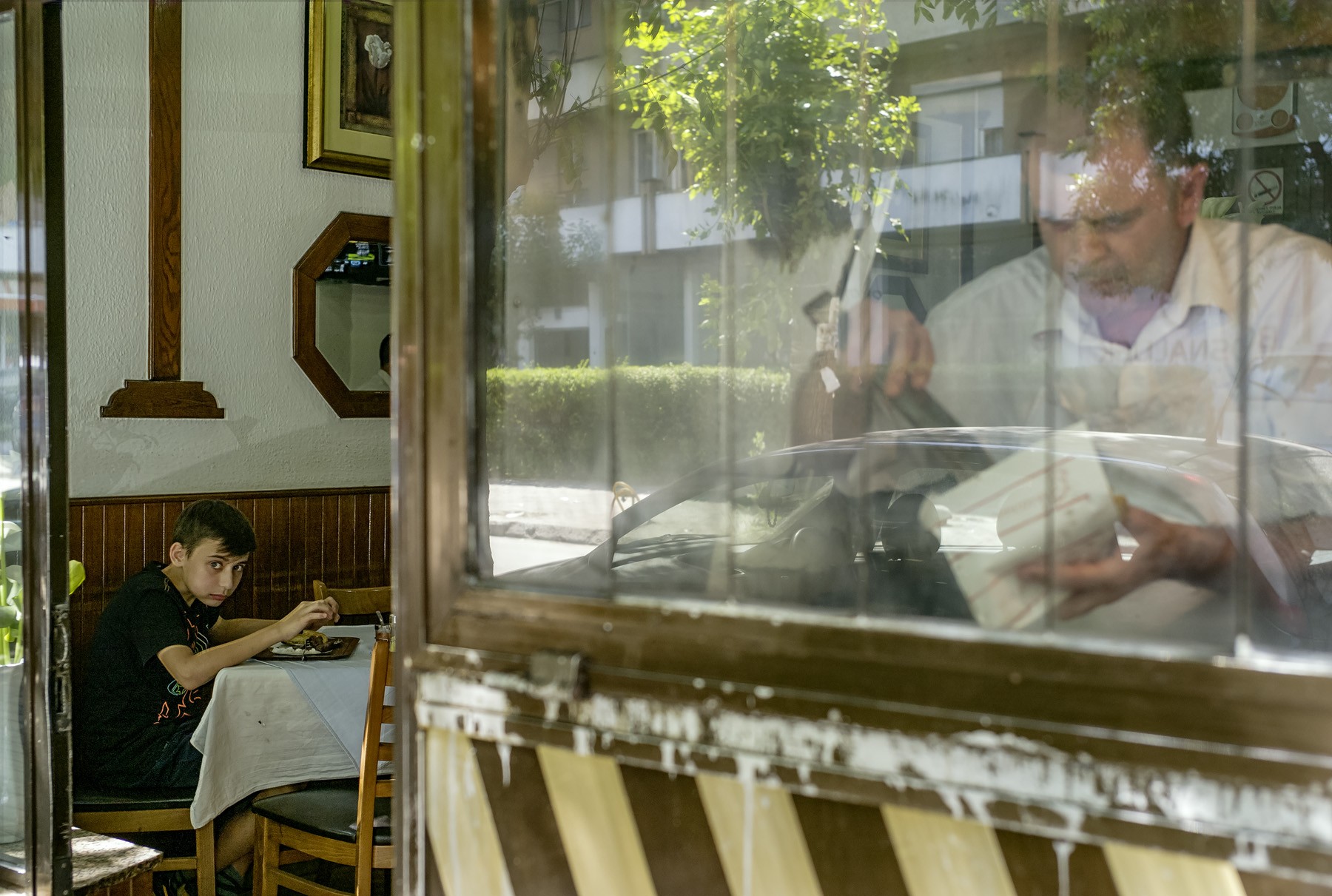
The pictures published with this article are all from the book Blood and Honey: Encounters at the Borders of the Balkans.
Nicole Segers‘In order to travel to the Croatian town of Dubrovnik, Croats first have to leave their own country and even the European Union’, writes Dutch journalist Irene van der Linde. She describes the trip while undertaking it with her companion, the documentary photographer Nicole Segers. The small strip of land running right through the two parts of Croatia belongs to Bosnia and Hercegovina and is an essential passage to the coast. The tiny village on the cliff is packed with hotels, casino’s, clubs and restaurants. ‘After a ten minutes’ drive, we crossed Bosnia and Hercegovina and entered Croatia again, with a new stamp in our passport.’
The Balkans are full of curious borders – as they have always been. Important historical frontiers ran right through the region: between the Roman and Byzantine Empire, between Catholicism and Orthodoxy, between the Ottoman Empire and the Habsburg Empire, between communism and capitalism, between the European Union and non-EU-countries. However, writes Van der Linde, since the breakup of Yugoslavia, the most distinct boundaries run through the countries themselves: through regions, cities, villages and sometimes even streets. These borders are still very present in actual daily life, especially in Bosnia and Hercegovina.
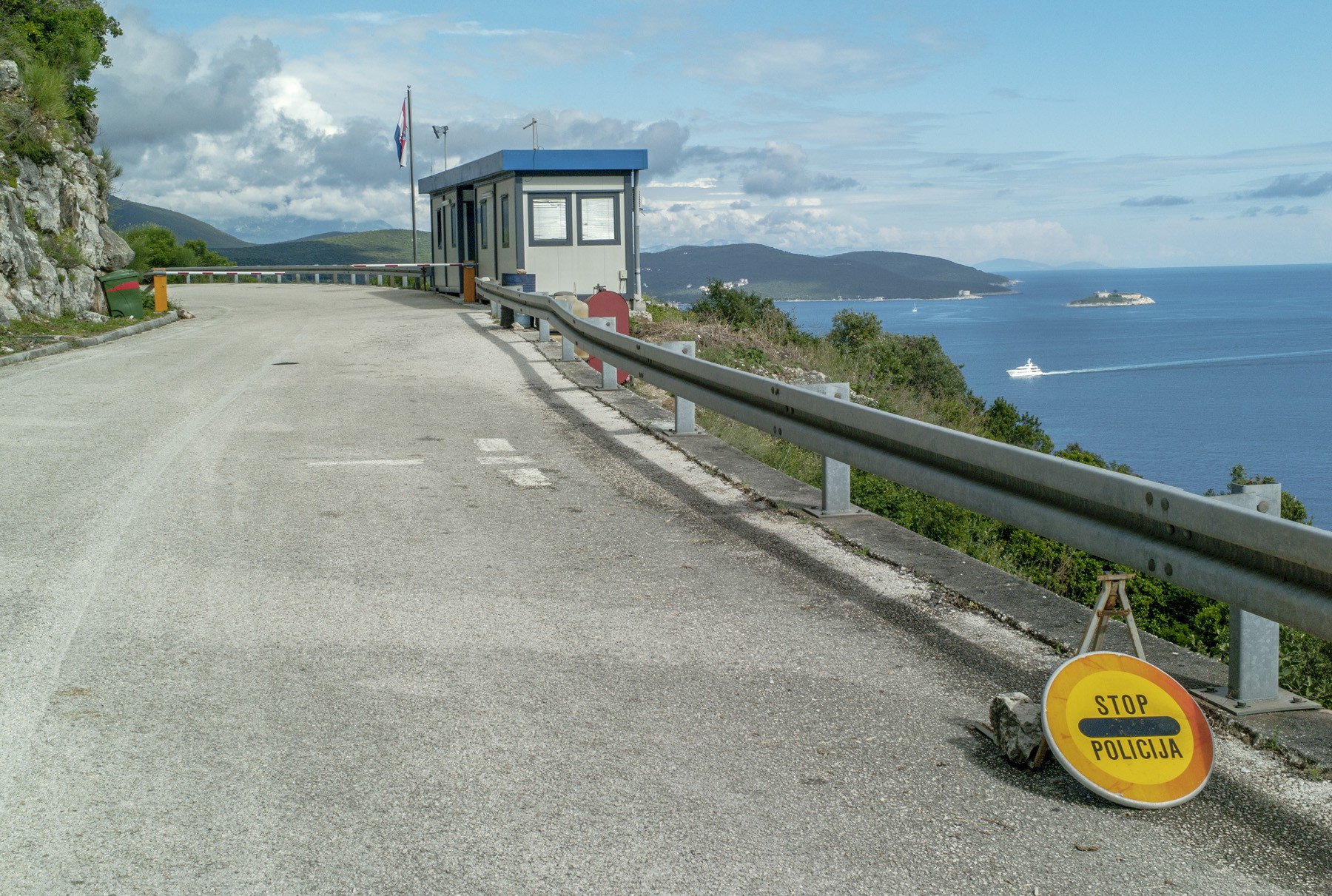
Van der Linde and Segers set out to document the external and internal borders of this region. Their outstanding work Blood and Honey: Encounters at the Borders of the Balkans tells the stories of the people they met and the places they visited. Currently, the book is only available in Dutch (Bloed en honing: Ontmoetingen op de grenzen van de Balkan), but hopefully it will be translated soon. It will be absolutely compelling for an international readership. The graphic design of the publication is marvellous, with ample space for photography, various font sizes and sometimes nearly empty pages – which give the stories a hint of poetry. And even though the journalist and photographer travel and work together, their texts and pictures are so autonomous that they enforce each other and inspire the reader simultaneously on different levels.
Blood and Honey can be considered as the last part of a trilogy about the borders of Europe. In 2004, the duo published The End of Europe: Encounters at the New Eastern Borders (Het einde van Europa: Ontmoetingen langs de nieuwe oostgrens), for which they travelled five thousand kilometres along the new borders of the expanding European Union. The Ferry of Istanbul: Encounters along the Bosporus (Het veer van Istanbul: Ontmoetingen langs de Bosporus) followed in 2010, discovering European’s new eastern neighbour and possible future member state Turkey.
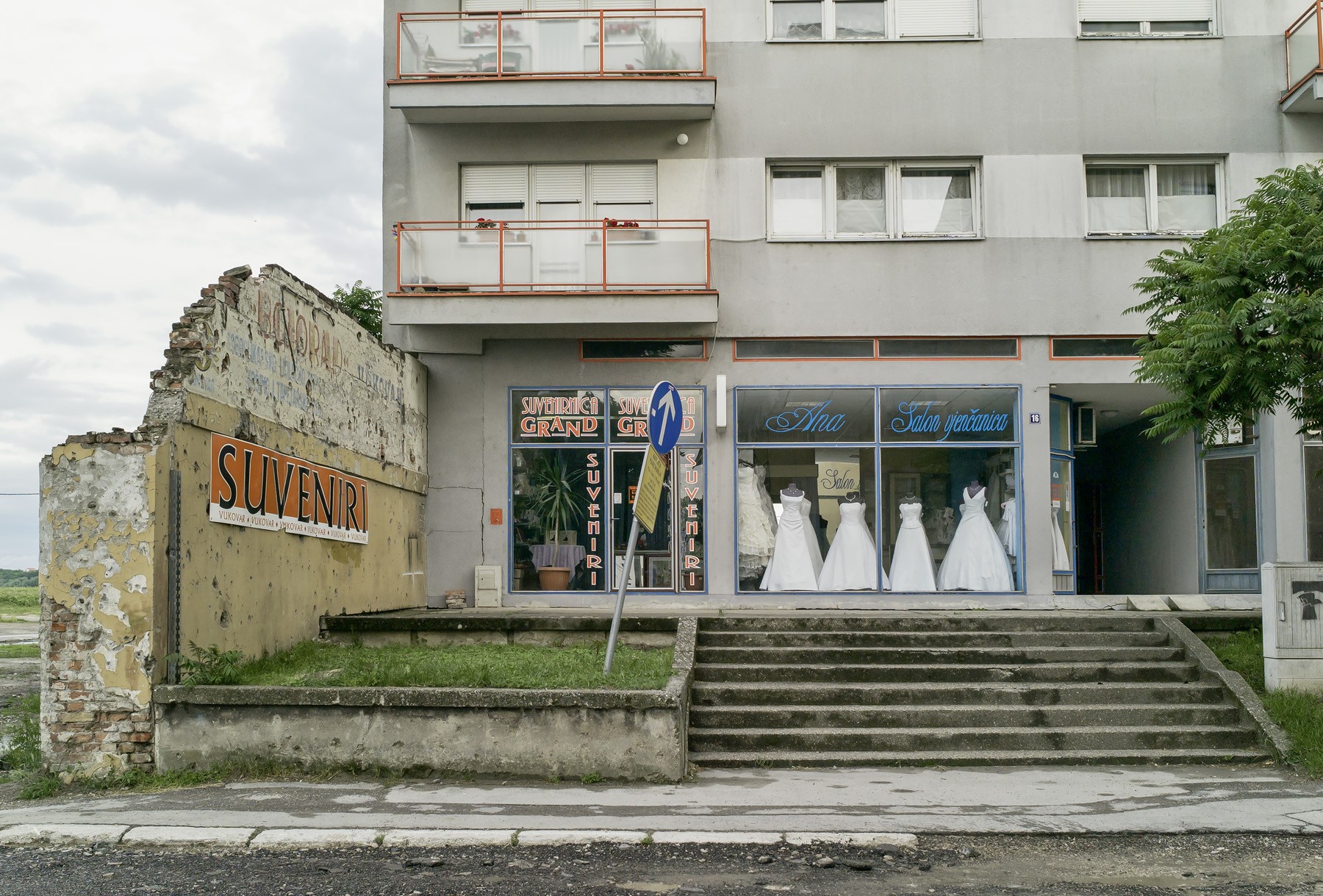
The starting point for this series is the idea that border regions function as a mirror for the centre, and should therefore be observed with curiosity and care. According to Van der Linde and Segers, the Balkans are currently a reflection of Europe, and hence should be considered to find out who we really are. Instead of appearing in the margins of our daily news feed, they ought to be more at the centre of our attention.
In her suitcase, Van der Linde carries Black Lamb and Grey Falcon, the iconic work of the British journalist and travel writer Rebecca West. Published in 1941, it describes the culture and history of former Yugoslavia as seen through the eyes of the people West meets during her travels. Eighty years later, Van der Linde and Segers follow her footsteps and take the same trail.

The picture they show of the region is rather grim. The scars of the breakup of Yugoslavia and the wars that accompanied it are still very present in the daily lives of the people they meet and the places they visit. With the rise of nationalism and populism, not only in the Balkans but in the European Union as well, prospects of an inspiring future in an ever growing union have become more unlikely. Youngsters almost unanimously want to leave, but the chances of being accepted elsewhere have diminished over the years. Adults still disagree about what happened during the wars. Historical revisionism is present in politics and in heated discussions among friends and neighbours – even though most people decided long ago not to discuss politics anymore, as it will destroy any conversation immediately.
A telling example is the chapter about Vukovar, called the ‘City or Heroes’ in Croatia because it was one of the front lines of the war for independence from the former Yugoslavia. Instead of rebuilding the warn-torn city, the Croats cherish the ruins as a statement of their suffering. ‘The destruction of the city is part of Croatia’s new identity’, Van der Linde writes, just one page after a picture of an old lady walking on a crosswalk, a building full of bullet holes in the background. ‘Carpe diem’ is printed on the plastic bag that the lady is carrying – a greater contrast seems to be almost impossible.
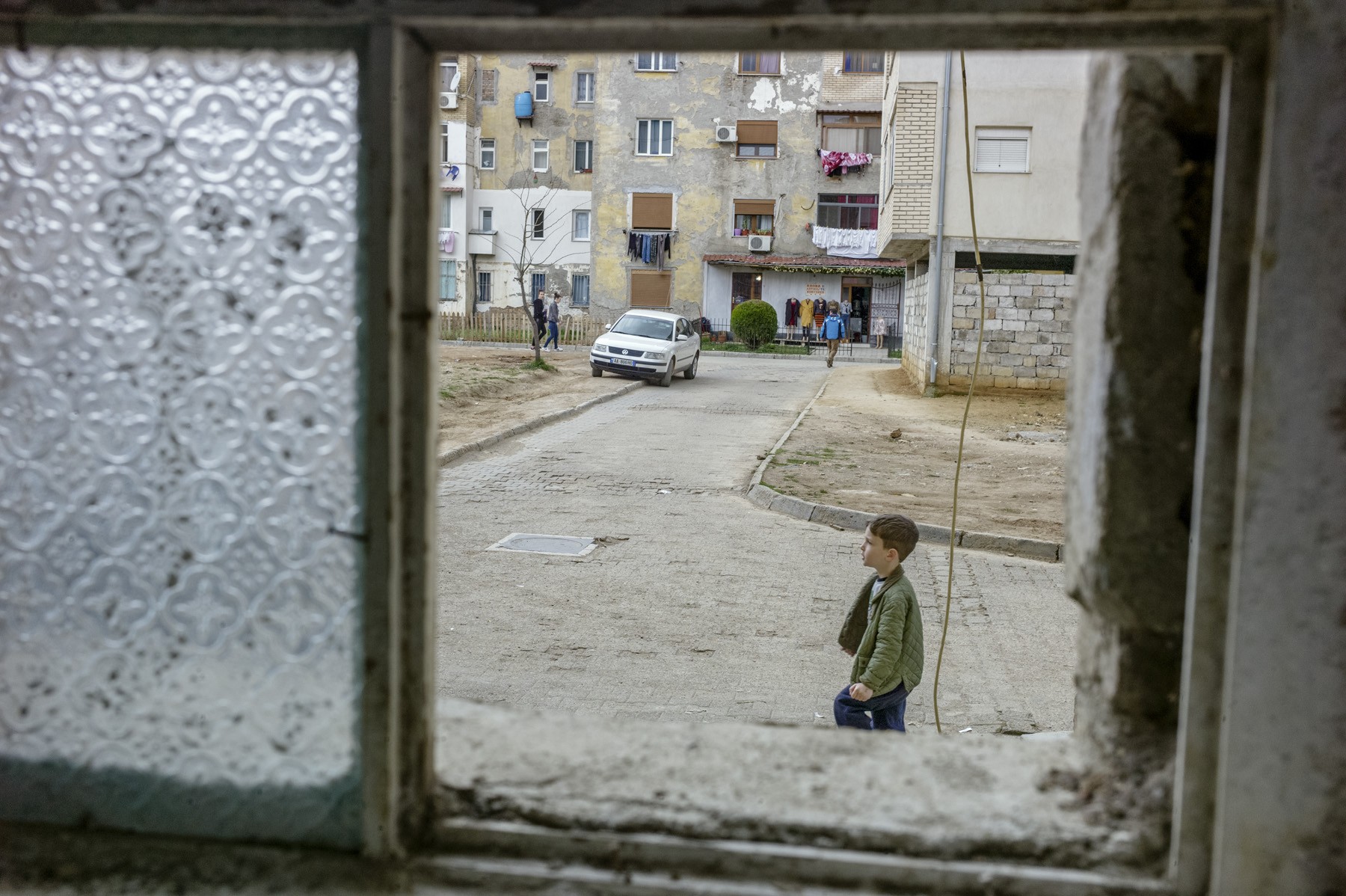
Citizens of countries like Serbia, North Macedonia and Bosnia and Hercegovina have lost hope that they will ever join the European Union. They believe they will never be able to change their status of candidate member which they sometimes hold for nearly ten years. The optimism during the first accession talks has turned into full blown pessimism about the future: within the union, but also within their own nation states. ‘I am mad at the adults who destroyed our country’, says Jasmin Dozlic, a teenager the journalists meet in the Bosnian town of Mostar. ‘And I am mad because they don’t know how to rebuild it.’
This anger and pessimism runs like a thread through the stories and pictures of Blood and Honey. Even Croatians, who joined the EU in 2013, are rather depressed about their future. ‘We’ve been members of the European Union only since a couple of years’, a Croatian scientist says to the journalists in a bar in Zagreb. Reflecting on current developments like the Brexit, the deterioration of the rule of law in states like Poland and Hungary, and the anti-Brussel sentiments in some of the founding states, he lost hope for a better future. ‘It feels like we joined the party only at five in the morning.’
Blood and Honey: Encounters at the Borders of the Balkans (Bloed en honing: Ontmoetingen op de grenzen van de Balkan) by Irene van der Linde and Nicole Segers is published by Boom|Lecturis.
